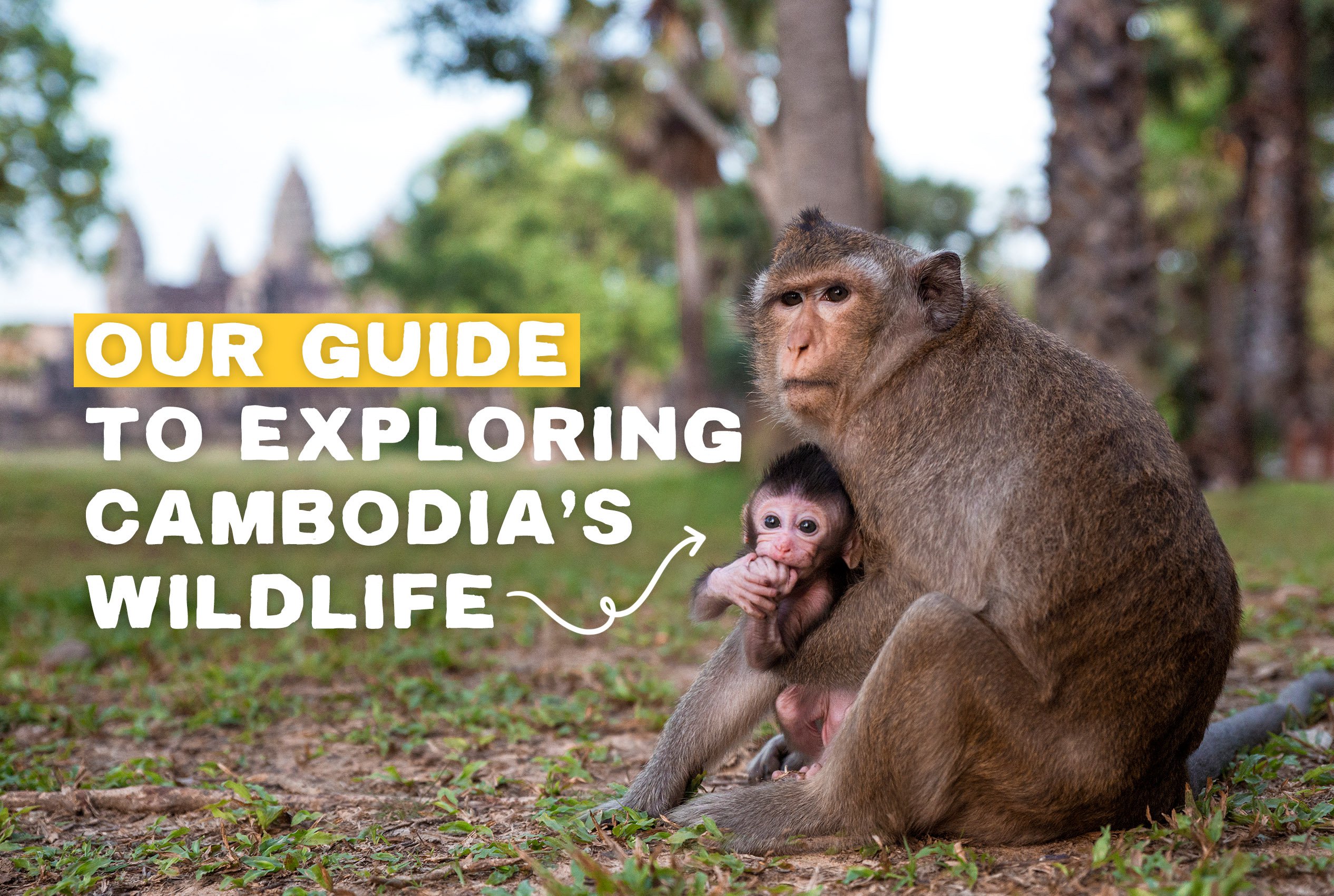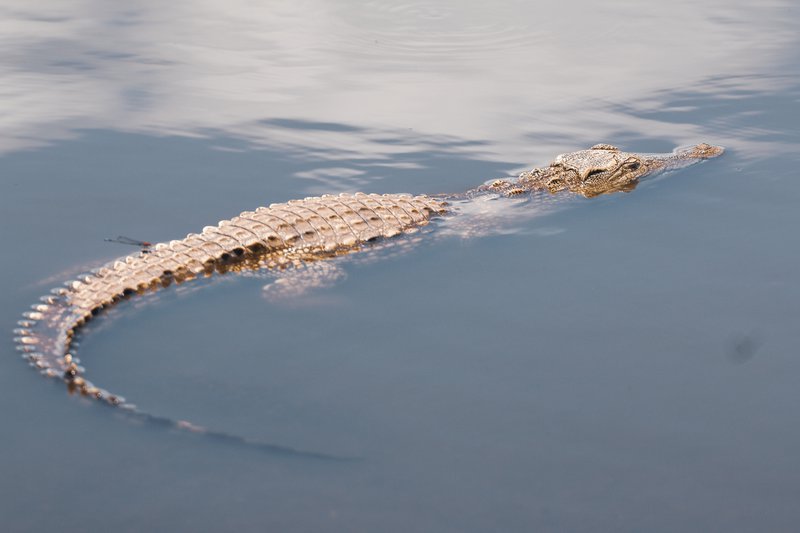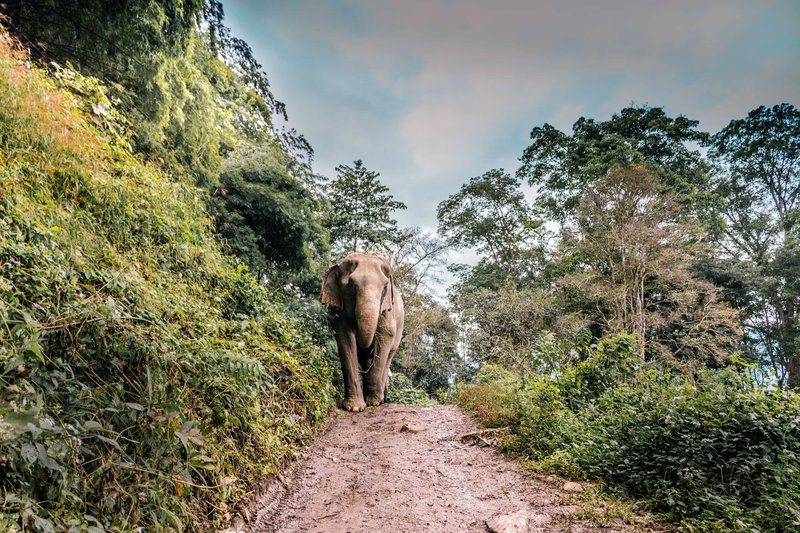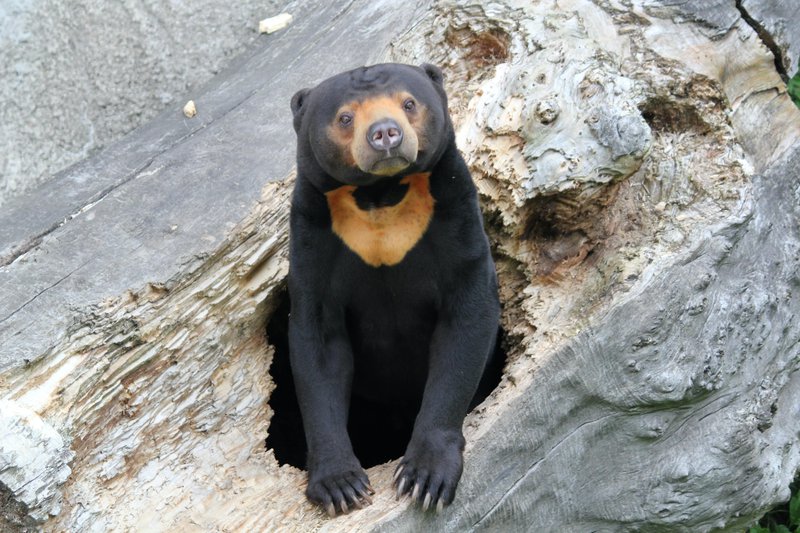A Guide to Cambodia’s Wildlife

As well as being home to the world's largest temple complex, Cambodia is home to some of the world's most beautiful rare animals. With many of these species endangered, make sure to visit these amazing creatures at an ethically approved reservation! Here's our list of animals you should put on your list when you head to Cambodia:
Dhole
Also known as the Asian Wild Dog, Doles have a distinct orangey fur, long tail, and rounded ears. Dholes live in Asia’s most remote forests and can prey upon much larger animals such as deer and boars, but will also hunt smaller game like monkeys.
Siamese Crocodile
Siamese Crocodiles are carnivorous freshwater crocs. Significant breeding efforts of this crocodile occur in captivity, yet with less than 1000 left in the world, it is one of the most endangered crocodile species.

Sunda Pangolin
The Sunda Pangolin has poor eyesight and no teeth, instead it relies on its strong sense of smell and sticky tongue to catch ants and termites. This animal is found in forests and spends most of its life in trees. The Sunda Pangolin is one of the most valuable animals in the illegal wildlife trade. It is usually hunted for its meat and scales which are used in medicine and clothing manufacturing.
Yellow-Cheeked Crested Gibbon
These cuties are born blonde and turn black. Males will carry the black color through their lifetime, while the females change back to blonde after reaching maturity. Threatened by illegal pet trade in Southeast Asia, these animals are also hunted as a source of meat in rural areas and for their bones in medicine.
Asian Elephants
Now endangered, only about 400-600 Asian elephants are estimated to remain in the wild. The elephants have faced habitat destruction from mining and are hunted for their tusks which reap a high reward on the black market. Elephants are a significant symbol in temples of Angkor, Cambodia. It is estimated that over 6,000 elephants were used in transportation of materials and construction of the Angkor Wat complex. Interested in visiting this world-famous religious complex? Check out the Intro Cambodia tour!

Pygmy Slow Loris
Cute but deadly! With a toxic bite, these adorable animals are one of the only venomous mammals on earth and yes, they could actually kill you. Used to aid catching prey, they also use their venom for protection of offspring. Covering their babies in venom wards off predators while the mother searches for food. Habitat loss and hunting for use in traditional Bunong and Khmer medicines has unfortunately hurt the Pygmy Slow Loris population.
Sun Bear
The smallest and rarest of all the world’s bear species. Their long claws allow them to climb trees and dig for insects. With poor sight and a heightened sense of smell, these bears are nocturnal and search the forest for food at night. Sun bears are often hunted for their gall bladders, an ingredient in traditional medicine. Look at that face, how could you hurt these guys?!

Irrawaddy Dolphin
You might mistake these dolphins for a beluga whale. Dark gray in color, their forehead lacks a beak. They also have long-broad flippers and a rounded dorsal fin. These dolphins live in salt and freshwater systems. With less than 85 expected to be remaining in the world, take advantage of a mere $10 boat ride along the Mekong River and try to spot one of these beautiful animals for yourself!
Cantor’s Giant Softshell Turtle
Also called the “frog-faced softshell”, these giant turtles can grow to the size of a small couch and have life spans greater than a century! You can find these guys in freshwater but strangely also in brackish, coastal waters. There were once tons of these strange turtles along the Mekong River in northern Cambodia. After a period of increased harvest of their eggs, it appeared the population went extinct in Cambodia. That is until nests were re-discovered in 2007 and greater conservation efforts were launched.
Ready to see some of these amazing animals in Cambodia? Make sure to research before visiting any wildlife sanctuary. It is important to certify they practice responsible care for their animals, so you can learn about these species guilt free. If you're interested in exploring Cambodia, check out our group tours via the link below.
For more information about travelling South East Asia, including info about where to go, when to go, how to get around, how much money to save, and what to bring, check out our Ultimate Guide to Backpacking SE Asia here!



